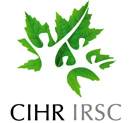


| CIHR Institutes |
| ICRH Home |
| About ICRH |
| ICRH Funding |
| ICRH Publications & Resources |
| ICRH Calendar of Events |
| Contact ICRH |
I recently came across an article in The Globe and Mail that ranked innovations and their impact across different countries. It concluded that while Canadians overall have tremendous talents, we are reticent about bold innovations, shy about marketing our ideas, and cautious around new investments. We do realize of course that innovation is the key to research success and is the engine for the future knowledge-based economy. As Canadians we must innovate to compete globally.
Innovation in medicine has provided the world with antibiotics and vaccines against infection, pharmaceutical agents and surgical techniques that reduce mortality and morbidity, and understanding of the genetic heritage of humans in evolution. Innovations do not have to be expensive. For example, the discovery of H. pylori as the underlying cause of peptic ulcer saved millions of dollars in ulcer surgery, and improved the lives of countless patients.
The question that has often arisen is "How does one innovate?" It turns out that this is the same question asked by many of the world's top ranked companies. Companies like Google, rated #1 in the world for continuous innovation, make innovation their top priority. Interestingly, Google is organized internally into interdisciplinary teams that compete for company resources based on innovative ideas - surprisingly very much like the CIHR grant application processes.
The research groups or companies that succeed in bringing new ideas into their programs value innovation as the top line goal. For many companies, this is part of their intrinsic culture, and is viewed as a means to an end. For research teams, this means that priority and resources are allocated preferentially to the most innovative aspects of their research.
Good research takes tremendous time and money, so researchers must try to address critical gaps in knowledge, and provide answers to the important challenges that we all face. This involves collaborating in order to identify and prioritize those research projects that will provide the greatest "bang for the buck" and bring the most positive and far-reaching outcomes.
Where does one find new ideas? Surprisingly, new ideas are everywhere for the open and prepared mind. The most innovative ideas often arise outside their traditional disciplines, and the "aha" phenomenon is inspired by making connections between domains of experience not normally associated with each other. The idea of the "world wide web" first arose from a researcher at CERN looking for new ways to help physicists from different disciplines communicate with each other; and the idea of attaching a balloon to catheters to float them easily into patients' pulmonary arteries (Swan-Ganz catheter) came from watching sailboats in action in the Pacific.
New ideas today are now coming mainly from interdisciplinary teams made up of experts from diverse and non-traditional domains talking and interacting with each other, to solve common problems. This is where "translational research" will particularly have its impact, and why CIHR promotes the concept of interdisciplinary research.
Innovation by definition breaks down old concepts and barriers. It took courage to say that the earth was not flat, and that H. pylori caused stomach ulcer. It entailed risks for the investigators to propose that strokes and heart attacks can be treated by clot dissolving drugs, and to suggest that risks for cardiovascular disease arise in utero even before one is born.
However, to make the biggest new discoveries, one always has to break down the traditional paradigms and cross new boundaries. One needs to continually question whether current methodologies, techniques and tools can be improved upon.
To fast track innovation, there must be rapid sharing of new information. For new ideas to flourish there is no room for bureaucracy, hierarchies and seniorities. Modern databases and search tools shorten the time for seeking an answer from hours to days down to minutes. The currently available electronic tools bring people and ideas together, and we will look for ways by which CIHR-ICRH can provide more effective forum for sharing of ideas and linking collaborators.
Novel ideas must be tested quickly and effectively to determine whether it's worthy of ongoing pursuit. New ideas that are left unexplored will either whither completely or soon be exploited by global competitors. New ideas must be tested and evaluated with robust tools as soon as possible.
It is natural to be fearful of failure. However, it is the ability to get up after a fall that determines who is the strongest at reaching the finishing line. It is critical that we create an environment where it is acceptable to encounter failure on the road to finding success.
Canadian researchers are talented and superbly trained. However, we must make innovation a part of everyday research endeavours in order to compete globally. Let's innovate together now to make the world a better tomorrow.
Sincerely,
Peter Liu, MD, FRCPC
Scientific Director, ICRH